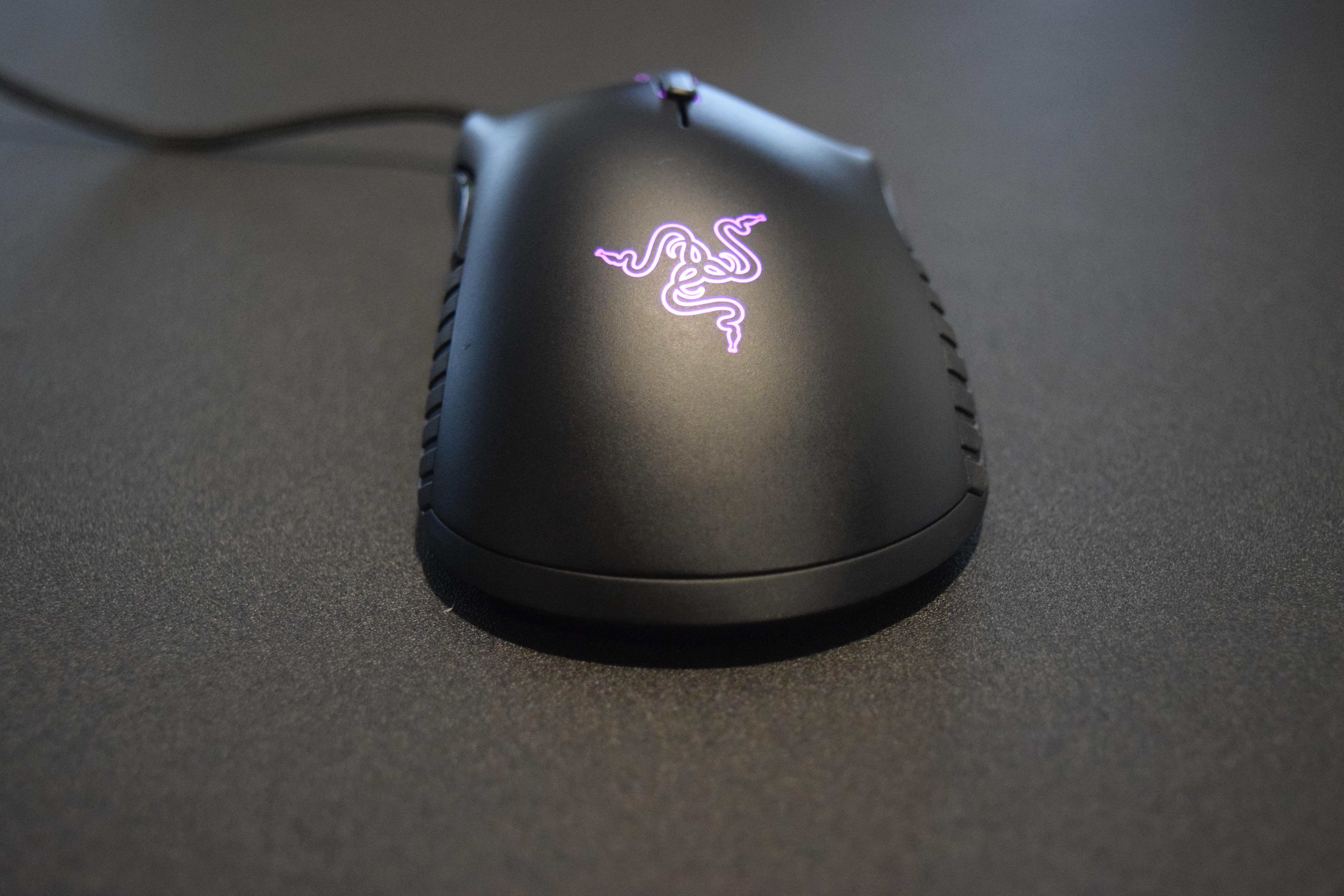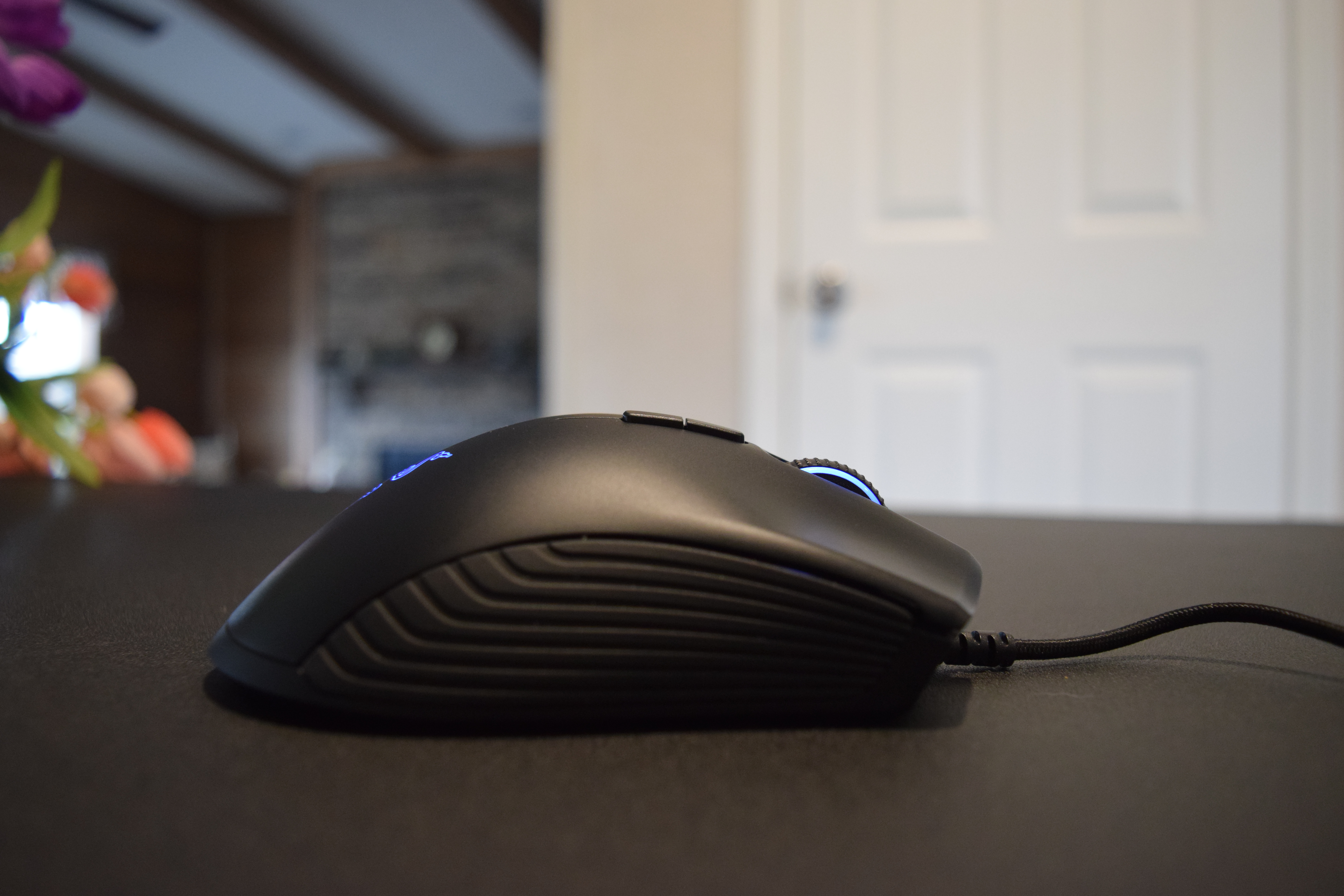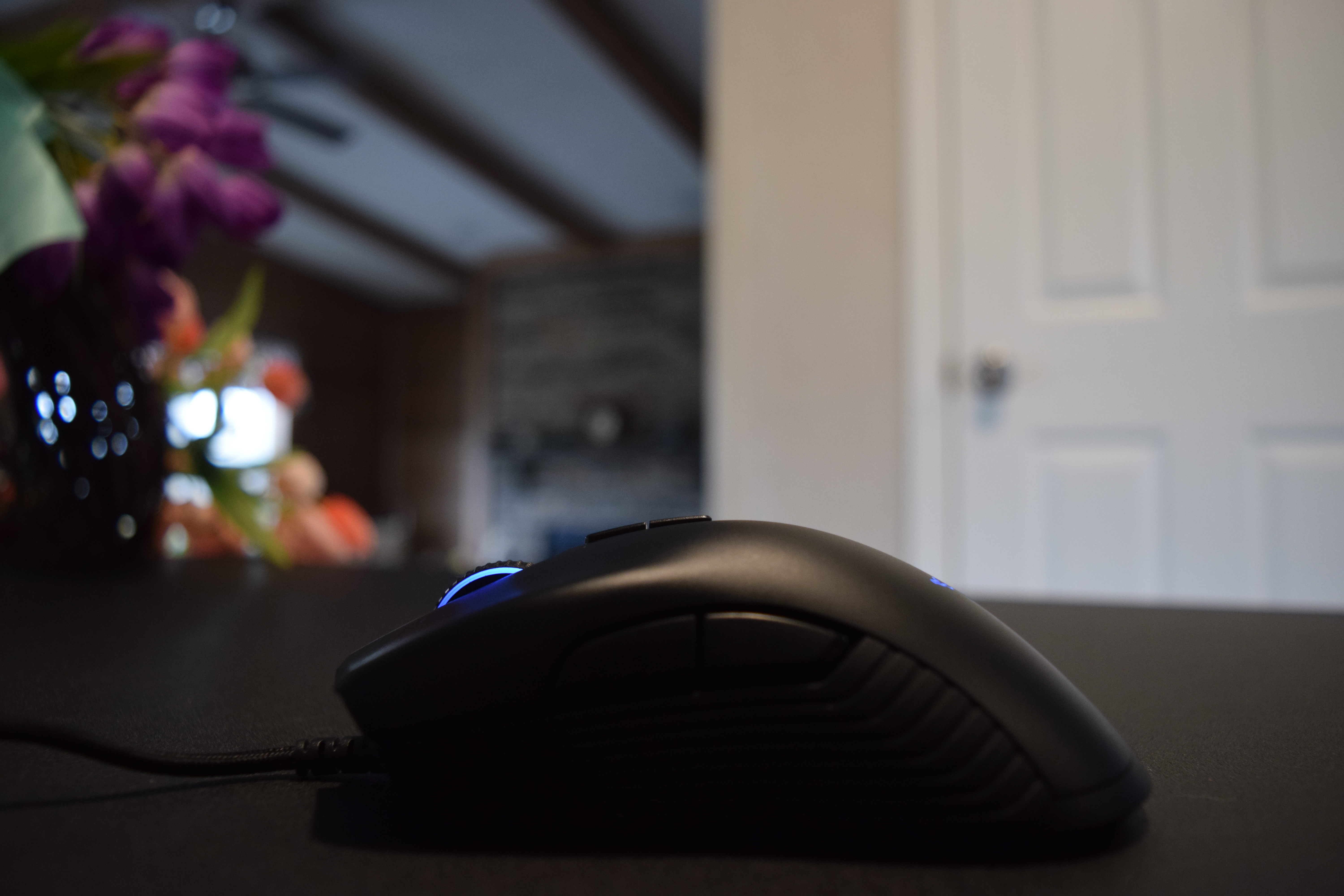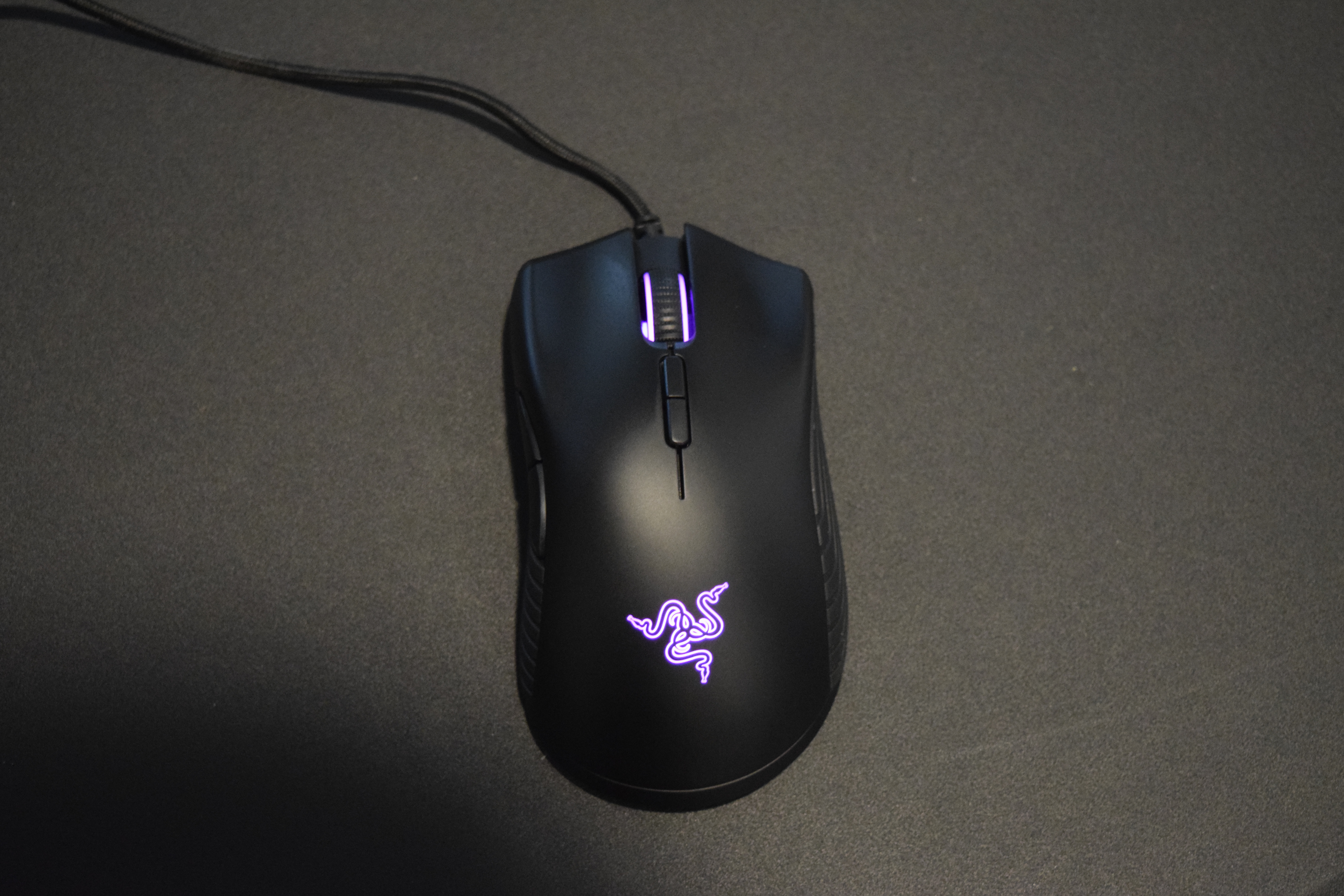Tom's Hardware Verdict
The Razer Mamba Wireless has a sensor gamers will appreciate and shows performance that's on par with other Razer mice. But its side grips can feel slippery.
Pros
- +
Reliable sensor
- +
Rechargeable battery
- +
Supports wired and wireless connections
- +
Offers similar specs to other Razer mice
Cons
- -
Poor grip for sweaty hands
Why you can trust Tom's Hardware
It's officially the Year of the Rat, according to the Chinese zodiac, but for Razer, it’s always the Year of the Snake -- at least when it comes to its mice branding. The latest one to slither into our labs is the Razer Mamba Wireless (currently listed with an MSRP of $100, but has been selling for as low as $45 lately) , which specs-wise offers a lot of what gamers appreciate in their best gaming mouse, like a high CPI count and RGB lighting, on other Razer mice.
The Mamba Wireless ups its value proposition, particularly as a Best Wireless Mouse hopeful, with options for a wired or 2.4 GHz USB Type-A dongle connection. But those side grips can make for one slippery snake.
Razer Mamba Wireless Specs
| Sensor Type | Optical |
| Sensor Model | Razer 5G Advanced Optical Sensor |
| Sensitivity | Up to 16,000 CPI |
| Polling Rates | 125, 500 or 1,000 Hz |
| Programmable Buttons | 7 |
| LED Zones | 2 RGB zones |
| Connectivity | 2.4 GHz wireless via USB Type-A dongle; wired via USB Type-A cable (included) |
| Measurements (LxWxH) | 4.95 x 2.75 x 1.7 inches (123.73 x 69.85 x 43.18mm) |
| Weight (without cable) | 3.74 ounces (106g) |
Design and Comfort on Razer Mamba Wireless



Design-wise, the Mamba Wireless is a lot like Razer's other mice. It features seven programmable buttons: the primary mouse buttons, (which both use mechanical switches rated for up to 50 million clicks each), two side buttons, two buttons under the scroll wheel and one more in the scroll wheel itself. The mouse is lightly contoured, too, especially compared to the Basilisk line.
The Mamba Wireless is a right-handed gaming mouse with a black-and-gray color scheme. However, two-zone RGB lighting (the scroll wheel and the palm rest) adds a bit of pop to an otherwise staid design. The mouse’s RGB lighting supports up to 16.8 million colors, and to my eye, all of those colors shined with brightness and clarity.
If that sounds familiar, well, that's because that sentence describes most of Razer's mouse lineup. There are no major departures from the traditional Razer look in the Mamba Wireless -- just slight variations on a common theme.
So how does the Razer Mamba Wireless stand out? Ditching the wire immediately differentiates it from the Razer DeathAdder V2, Razer Basilisk V2 and Razer Viper. But unlike the Basilisk X HyperSpeed, another wireless Razer mouse, the Mamba Wireless does support a wired connection. In a much appreciated move, it also nixes the need for a AA battery by offering a rechargeable power source.
The Mamba Wireless features a spongy texture on the grip that immediately stood out from how other mice in Razer’ lineup feel. Unfortunately, that isn't a good thing. The grip would end up feeling a little grimy when I played games for any length of time. Yes, that's partly because of my sweaty hands. Still, I’ve had less absorbent grips on gaming mice that put up with sweat much better.
Get Tom's Hardware's best news and in-depth reviews, straight to your inbox.
The mouse measures 4.95 x 2.75 x 1.7 inches and weighs roughly 3.74 ounces if you don't count the cable. That means it's shorter, wider and taller than the Basilisk V2 (5.11 x 2.36 x 1.65 inches, 3.3 ounces), which is my favorite of the Razer mice I've reviewed so far. Still, the Mamba Wireless felt generally smaller when I actually used it.
Gaming Performance of Razer Mamba Wireless
I spent a week-and-a-half playing as much of the closed beta for Valorant, a tactical shooter from Riot Games, as possible. The game's low ping, high tick rate servers and emphasis on accurate shooting make it ideal for assessing the Mamba Wireless' performance.
But first, let's run down the specs. Razer equipped the Mamba Wireless with its proprietary 5G Advanced Optical Sensor that supports up to 16,000 CPI with 450 IPS and 50G acceleration.
The sensor itself was accurate -- just like with the other Razer mice I've reviewed in recent months. It kept pace with frantic flicks across the entire width of my mouse pad, and accurately responded to fine motions as I attempted to learn the Valorant arsenal’s spray patterns. Performance felt reliable regardless of the CPI setting I used. I typically have it set to 1,600 but also tested at 800 and 3,200.
I didn’t have any problems reaching or activating any of the buttons. The primary mouse buttons, side buttons and CPI switches all produced a satisfying click when pressed. The Mamba Wireless features Razer Mechanical Mouse Switches, which are supposed to be able to withstand up to 50 million clicks. Those two buttons should be able to serve as most people’s daily drivers for a long time without any of the buttons becoming unresponsive.
On the wireless front, the mouse relies on a 2.4-GHz dongle connection. Razer claims that its proprietary Adaptive Frequency Technology gives the Mamba Wireless "stability that's as reliable as a wired connection." After a couple of days use, I didn't suffer any dropouts missed inputs that I could attribute to the mouse.
But despite this, I have yet to come to grips with the Mamba Wireless--literally. It doesn't seem to fit with my modified palm grip (with my middle and ring fingers on the primary mouse buttons), and because I don't feel like I have a steady hold on the mouse, I end up flailing around when I should be calm. Using a normal palm grip didn’t help much because my pinky dragged on my mouse pad. At no point have I truly felt comfortable with the mouse. But gamers who use claw or fingertip grip might find the Mamba Wireless more comfortable to use than I have. My colleague who uses a fingertip grip, however, also noticed her pinky dragging on the mouse pad during use and also thought the grips felt slippery at times.
In general, the Mamba Wireless’ performance is on par with other Razer mice. But offering similar performance in a less comfortable design doesn't work in the mouse's favor.
Features and Software on Razer Mamba Wireless
Like the brand's other mice, the Razer Mamba Wireless relies on the Razer Synapse 3 management software that saves custom profiles to the device's on-board storage, as well as the cloud.
You can use Synapse to set the five different CPI profiles for cycling through. Additionally, you can assign functions to the mouse's seven programmable buttons, modify the 1,000 Hz-by-default polling rate and more.
The Mamba Wireless's RGB lighting is manageable using Razer Chroma, which supports up to 16.8 million colors in two zones -- one beneath the scroll wheel and one in the Razer logo on the palm rest. You can get those LEDs to stay in sync with other Razer peripherals that also support Chroma.
According to Razer, the Mamba Wireless also supports “basic input” with the Xbox One (no word on the next-gen Xbox Series X yet).
Battery Life of Razer Mamba Wireless
Synapse also tells you the Razer Mamba Wireless' battery life and lets you modify the power settings. The first Wireless Power Saving setting lets you decide when the device should enter sleep mode, with options for 1-15 minutes. The second setting, Wireless Low Power Mode, lets you decide when the mouse should enter that eponymous state with options between 5-100%.
Razer claims the mouse offers up to 50 hours of gameplay on a single charge. With the RGB lighting on, I had to recharge the Mamba Wireless two days after I started using it with the Wireless Power Saving setting at 15 minutes and the Wireless Low Power Mode set to 30%. It’s possible the mouse simply didn’t go to sleep in that time, which could have led to battery drain. Luckily, the Mamba Wireless’ battery life met Razer’s expectations after that initial kerfuffle.
With the wireless Basilisk x HyperSpeed, I was able to play for more than 30 hours without making the battery icon budge. It’s worth noting that with the Mamba Wireless, Synapse actually shows a battery life percentage instead of an icon, like it does with the Basilisk X HyperSpeed.
The mouse charges over the included MicroUSB cable; however, it has a distinctly shaped connector, so any MicroUSB cables you have lying around may not fit in a pinch.
Bottom Line
On paper, the Razer Mamba Wireless seems a lot like the rest of the brand’s other gaming mice, considering its specs, design and features. With four of Razer’s mice currently listed in best gaming mice rankings, that’s not necessarily a bad thing.
However, battery life wasn't nearly as good as with the Razer Basilisk x HyperSpeed, which we've seen for selling for only $15 more or even the same price as the Mamba Wireless. As of writing, the Mamba Wireless is selling for $50, but if it starts going for $100 again, that'd make the Basilisk x HyperSpeed even more compelling.
Still, if you want a well-specced, gaming-ready pointer with a reliable wired connection and the option to go wireless when desired, the Mamba Wireless is worth considering -- especially if it’s on sale.
MORE: Best Gaming Mice
MORE: Gaming Mice Reviews
MORE: Best RGB Mouse Pads

Nathaniel Mott is a freelance news and features writer for Tom's Hardware US, covering breaking news, security, and the silliest aspects of the tech industry.
-
Phaaze88 With how poor my experience with Razer mice was, I'm just baffled with how well they score on Tom's...Reply
But then I have to remember that these reviews don't cover the durability of actual ownership, which is where these things fail, from my experience.
I went through several Razer Naga playing WoW from post Burning Crusade to Warlords of Draenor, after which I switched to a Corsair Scimitar and ran with it all the way to that pre Battle for Azeroth event with Sargeras' sword jammed in Silithus.
Over time, every time, without fail - the dreaded double click, and the design made it impossible to even try to clean the interior, which likely would've fixed that crap. -
gg83 i have exclusively use razer mice since they used trac-and-ball. currently i have the mamba elite and love it. I never thought about how difficult cleaning it will be though. thanks for the heads up. the only thing about razer I dont like is the over complicated software.Reply
